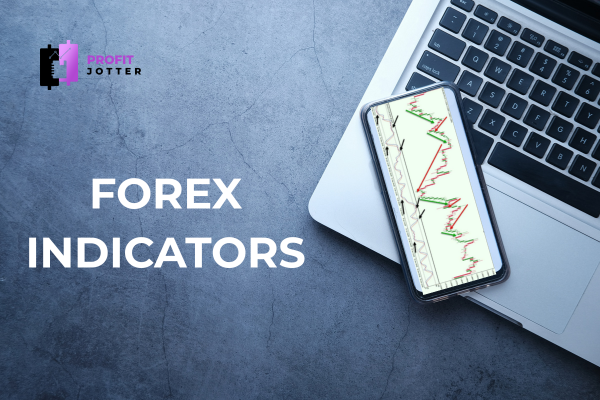Forex indicators are tools that help traders analyze market trends, price movements, and other key data points.
You could see them as a guide that provides valuable insights into where the market might head next.
Think of them as a compass in a sea of numbers, they point you in the right direction based on historical and real-time market activity.
Whether you’re just starting or looking to refine your strategy, learning how indicators work is a crucial step in Forex trading.
In this guide, I will break down the basics of Forex indicators, how they function, and why they’re essential for traders at any level.
Let’s go straight into it.
Post Summary
This post will take this path:
- What are Forex Indicators?
- Types of Forex Indicators
- How Do Forex Indicators Work?
- Popular Forex Indicators and How to Use Them
- Using Forex Indicators Effectively
- Limitations of Forex Indicators
- Why Should Beginners Use Indicators?
- Conclusion
Let dive into the post properly.
What are Forex Indicators?
Let’s begin by understanding what exactly these Forex Indicators are.
Simply put, Forex Indicators are mathematical calculations based on price, volume, and other market metrics.
They help traders identify patterns, trends, and potential trading opportunities in the currency market.
Think of them as your decision-making compass, offering guidance on when to buy, sell, or stay out of a trade.
These indicators are mainly used in technical analysis, where traders study price charts to forecast future movements.
While they don’t guarantee success, indicators can significantly improve your ability to make informed trading decisions.
Types of Forex Indicators
Forex indicators can be put into several categories, with each serving a specific purpose.
Here are the most common ones.
→ Trend Indicators:
These help identify the direction of the market.
For example, these include Moving Averages and Bollinger Bands.
→ Momentum Indicators:
This measures the strength of price movements, such as the Relative Strength Index (RSI) and Moving Average Convergence Divergence (MACD).
→ Volume Indicators:
These track the amount of currency being traded, like the On-Balance Volume (OBV).
→ Volatility Indicators:
These assess market fluctuations, such as the Average True Range (ATR).
→ Support and Resistance Indicators:
These mark potential price levels where a currency might reverse or consolidate, like Fibonacci Retracement levels.
How Do Forex Indicators Work?
Indicators work by processing historical data to create signals.
Let me give you a simplified explanation of how they operate.
→ Data Collection: Indicators pull data from currency price movements (open, close, high, and low) and trading volumes.
→ Mathematical Computations: They apply formulas to the collected data. For example, a moving average indicator calculates the average price over a specified period.
→ Visual Representation: The results are displayed as lines, bars, or oscillators on a trading chart, making it easier for traders to interpret market conditions.
→ Signal Generation:
Indicators provide buy, sell, or neutral signals.
For example, when an RSI crosses above 70, it might indicate an overbought market.
Popular Forex Indicators and How to Use Them
→ Moving Averages (MA)
What It Does: Tracks the average price over a specific time, smoothing out fluctuations.
How It Helps: Shows the overall trend of the market.
Example: A 50-day moving average crossing above a 200-day moving average may signal a buying opportunity.
→ Relative Strength Index (RSI)
What It Does: Measures momentum and identifies overbought or oversold conditions.
How It Helps: Values above 70 suggest overbought conditions, while values below 30 indicate oversold markets.
→ Bollinger Bands
What It Does: Creates bands around price movements to measure volatility.
How It Helps: When prices break out of the bands, it might signal a reversal or continuation.
→ MACD
What It Does: Tracks the relationship between two moving averages.
How It Helps: Generates buy/sell signals when the MACD line crosses the signal line.
→ Fibonacci Retracement
What It Does: Identifies potential support and resistance levels.
How It Helps: Helps traders predict where the price might reverse or stall.
Using Forex Indicators Effectively
→ Don’t Overload Your Charts: Using too many indicators can create conflicting signals. Stick to a few that align with your strategy.
→ Combine Indicators: Use complementary indicators for better accuracy. For example, pair a trend indicator (Moving Average) with a momentum indicator (RSI).
→ Test Before Trading: Practice with demo accounts to understand how indicators behave under different market conditions.
→ Understand Market Context: Indicators work best when used alongside other forms of analysis, like fundamental analysis or market news.
→ Adjust Settings: Customize indicator settings based on your trading style and the timeframe you’re analyzing.
The Limitations of Forex Indicators
While Forex indicators are powerful, they aren’t foolproof.
Just like everything in the world, there are some good aspects, and there are some concerns one should have in mind.
Here are some limitations to keep in mind.
→ Lagging Signals: Many indicators are reactive and may lag behind real-time price movements.
→ False Signals: No indicator is 100% accurate; always confirm signals with additional analysis.
→ Learning Curve: It takes time to understand and effectively use indicators.
Why Should Beginners Use Indicators?
Indicators simplify the complex nature of the Forex market, making them ideal for beginners.
They provide structure and guidance, helping you make logical, data-driven decisions.
However, it is important to be patient, as mastering these tools requires practice and discipline.
Conclusion
Forex indicators are invaluable tools for traders, offering insights into market trends, momentum, and potential opportunities.
For beginners, they act as a guiding light, making it easier to navigate the complexities of trading.
From Moving Averages to RSI and Bollinger Bands, these tools can help you make smarter decisions.
Remember, no single indicator guarantees success.
The key is to combine them, practice, and stay informed about market conditions.
With time and experience, you’ll develop the confidence to use indicators effectively, taking your Forex trading to the next level.




